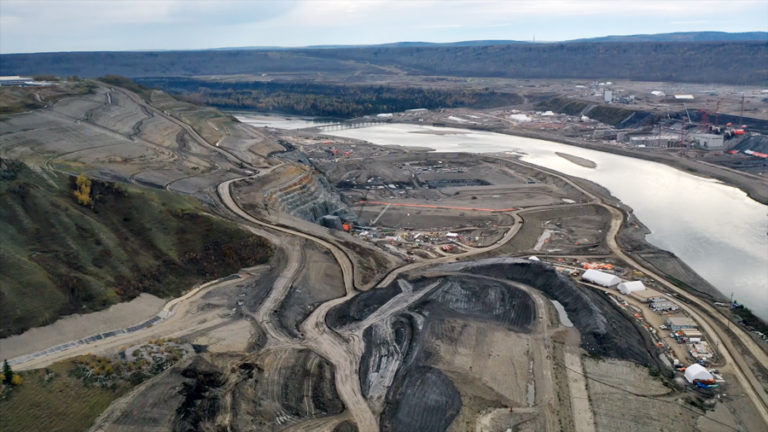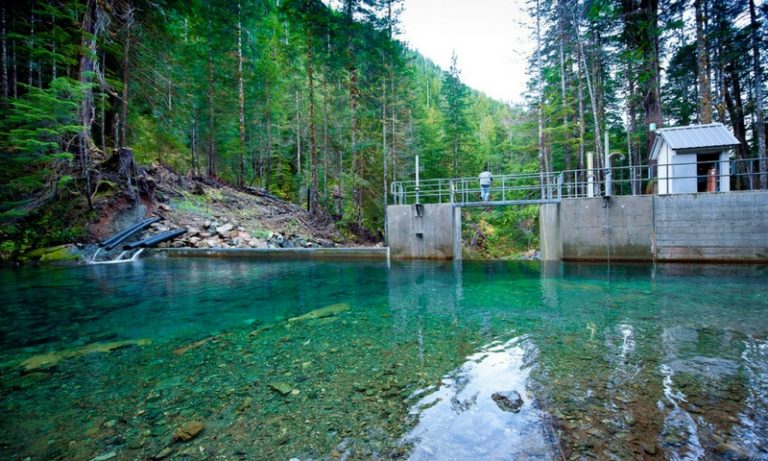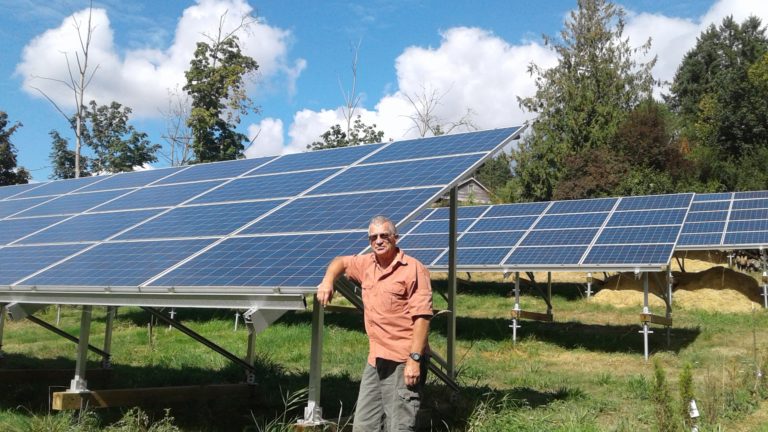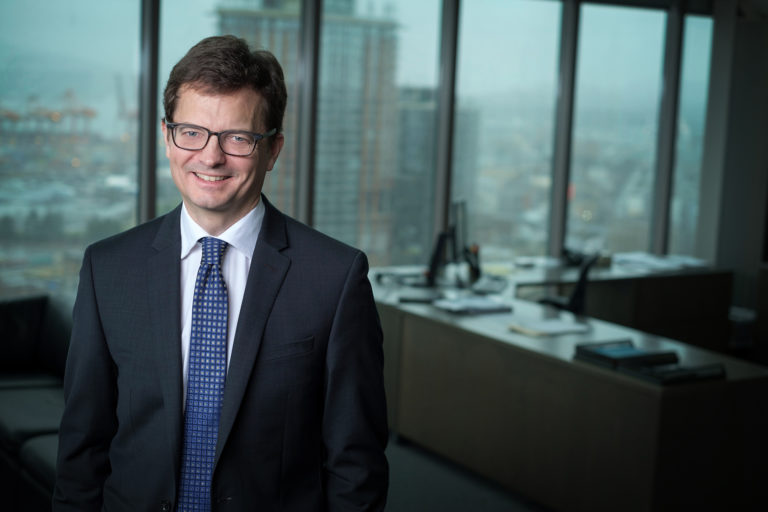The upsides of shutting down Site C
Renewables could deliver twice the power at half the price, evening out our losses on the troubled dam
Never put all your eggs in one basket. It’s a saying for a reason. Yet over and over again, governments gamble on megaprojects. Even when they know that nine out of ten giant dams and pipelines come in over budget and behind schedule.
Premier Christy Clark rolled the dice when she decided to build another dam on the Peace river. John Horgan doubled down on the troubled project in 2017. As Horgan’s new cabinet decides whether to go all in trying to keep building the dam, it’s getting much harder to ignore the upsides of cancelling Site C.
Corrupting a public utility
The bet Horgan made three years ago was that a new megaproject sited in a suspect location and facing fierce opposition could be built in time to support a fracked gas gold rush set loose upon northern British Columbia.
There were dreams of a Norway-inspired $100 billion dollar legacy fund. But first, gas exports had to be sold to the public as environmentally friendly. Cheap Hydro power would not only boost profits for fracking rigs and LNG terminals, electrification would produce fewer emissions than running the whole fracking industry on gas powered turbines.
It was a win for the fracking industry, but not for the people paying for the dam – us. Despite runaway project costs Christy Clark committed BC Hydro to pushing Site C “past the point of no return.“ It was a deliberate corruption of a public utility’s mandate.
The project is still not “past the point of no return”. And it certainly wasn’t in 2017, when the new NDP government asked the BC Utilities Commission to review the inherited project. The BCUC wasn’t allowed to make a recommendation. Instead it stated simply that continuing or cancelling would cost about the same.
Horgan justified his decision to continue Site C by claiming that financial woe and misery awaited British Columbians if we pulled the plug on the dam. The more plausible version of that story is that he was fully committed to fulfilling Christy Clark’s LNG pipe dream. The only way to do that without growing emissions even more significantly was to electrify the fracking industry.
The coverup
Thanks to the work of investigative reporter Sarah Cox, we now know with certainty that Horgan’s gamble has not paid off. Senior civil servants reporting directly to NDP ministers knew in May 2019 the project faced serious geotechnical problems due to its “weak foundation.” And they knew that would mean massive cost overruns.
News of the dam’s troubles started to trickle out this summer. Meanwhile, Horgan was laying the groundwork for a snap election. He needed to keep a lid on the Site C story. Once again, Government went out for ‘independent advice.’ Special advisor Peter Milburn was appointed to conduct another review, due some time after the election, so Horgan could “duck tough questions out on the campaign trail.”
That’s a glimpse into the politics behind the NDP cabinet’s second review of this project. With only weeks before they make the decision whether to proceed or cancel, it’s fair to wonder how much they are still keeping from the public.

Photo of Site C construction by Jayce Hawkins
An abuse of power
All of us own BC Hydro, and we as a society agreed to grant our public utility a monopoly. The monopoly is in place so the utility can generate affordable power for the public good. But as Site C pushes BC Hydro ever closer to insolvency, what we see appears to be a breach of public trust.
International experts say the oversight on this train wreck is the weakest they’ve ever seen. Reporters have had to appeal to the Office of the Information and Privacy Commissioner to force the Crown corporation to release information. What little we have seen is shocking.
Equally worrying is what we’re not seeing – which is leadership from the province or BC Hydro urgently encouraging the switch from fossil fuels to electricity. Support for local projects that create jobs and strengthen communities. Or our public utility stepping forward to battle the climate crisis.
Site C has given British Columbians a window into a corrupted utility that’s asleep at the switch. Premier Horgan stands to save taxpayers at least six billion dollars if he cancels the project. He should do that, and reassert public control over BC Hydro. True, cancelling Site C will lose us over a gigawatt of new generation capacity. Fortunately there’s no shortage of options for replacing that power.
The power of reconciliation
In a future where Site C is cancelled we can generate twice the power at half the cost. It’s also a future where individuals, communities, and new Indigenous-led utilities could come together to lead the energy transition. It’s a powerful opportunity for reconciliation in a province that passed a law enshrining the rights of B.C’s Indigenous peoples.
Two weeks ago I attended the Indigenous Energy summit. On display were projects like Tla-o-qui-aht’s six-megawatt run of river project, approved before the Standing Offer Program was cancelled. Built above fish habitat, it’s quietly powering Tofino and will leave a legacy lasting generations. It’s just one of 84 projects by First Nations contributing an estimated 13 per cent of B.C.’s generation.

Tla-o-qui-aht’s run of river hydro project on Vancouver Island.
However, projects not built also stuck with me. Like the 26-megawatt solar installation proposed by ?aq’am’s Marty Williams that I’ve written about before. If the Standing Offer Program had continued, the money sunk to date on Site C could have funded 125 ?aq’am scale solar parks. Together they could already be delivering double the power at half the cost.
Cancelling Site C gives us a second chance to partner with Indigenous communities. Their projects would stimulate local economies and spread energy revenue around the province, without poisoning the land or risking people’s health and safety. Opening the door for Indigenous-led utilities should be the first decision the BC NDP makes after it cancels Site C.
Healthier communities
Net Zero pioneers like David Slade and Peter Nix in the Cowichan Valley are saving money – not just on Hydro and gas bills but vehicle fuel – by going zero carbon. The appeal of creating all the power you need on your roof or in your backyard is contagious, and new government programs like PACE will only speed energy independence at the household level.

Peter Nix stands by an array of panels purchased co-operatively by community members in the Cowichan Valley.
Meanwhile municipalities like New Westminster, Nelson, Hudson’s Hope and Central Saanich are using the low cost of renewables to save their residents money. First Nations including Tsleil-Waututh, Kanaka Bar and T’Sou-ke are running their own facilities on solar.
Yes, in all these cases distribution is managed centrally. However what these individuals and communities have done is to insulate themselves from politically motivated decisions over energy. If the government ignores all evidence and ploughs ahead with Site C, people who can generate their own power will be hurt the least by the eventual huge spike in BC Hydro bills.
The upside of cancelling Site C
Of course there are drawbacks to cancelling Site C. Foreign LNG companies won’t get to greenwash their fracked gas on the taxpayer’s dime. And lucrative bonuses doled out to Powerex energy traders might be in danger. We’ll all have to listen to the NDP and Liberals fight for a decade over who was responsible for a boondoggle 80 times more costly than the Fast Ferries.

BC Hydro President and CEO Chris O’Riley’s salary is $554,900 per year.
However, the alternatives are very compelling. First of all, we can walk away from all the financial, geological and legal risk posed by Site C – not to mention the danger to people downstream if the dam ever fails. For less than we would spend to complete it, thousands of tradespeople can be put to work in their home communities, upgrading buildings and constructing distributed, low impact renewable energy projects.
Indigenous communities, who either way are setting themselves up to disconnect from centrally controlled energy grids, could be treated as allies of our public utility, instead of adversaries. Finally, halting Site C gives us the opportunity to take back control over a rogue Crown corporation. In the midst of a climate emergency, BC Hydro’s primary job should be to electrify every vehicle, furnace and stove in the province. Our public utility should be working flat-out to free our communities from fossil fuels.
New cabinet, new conversation
With ministers now sworn in, the decision about what to do with Site C should be looked at with fresh eyes.
This is Horgan’s project now, and one he will wear either way for the rest of his political career. NDP veterans like Energy Minister Bruce Ralston have already cast their votes in favour of this project. But they will have to convince a new group around the cabinet table that it’s worth paying the political price to keep going on Site C.
Like the new Minister of State for Infrastructure Bowinn Ma, who not only is a rising star in the NDP but an engineer to boot. Or the new Minister for Indigenous Relations and Reconciliation Murray Rankin, who as a lawyer, understands that crown infringement on Indigenous title must be justified. Site C could still be set aside by the courts. Given the B.C. Utilities Commission concluded this project was not justified, there’s a reasonable chance a judge hearing West Moberly’s claim will agree.
Or there’s the new Minister of Mental Health and Addictions, Sheila Malcolmson, who called the BC Liberal decision to approve this project “reckless.” She along with new members of the Executive Council like Josie Osborne, Nathan Cullen and Niki Sharma will be tougher to persuade than their predecessors.


It is time to cancel Site C! We cannot afford any more fracking danger to our province and must turn to green, renewable energy sources. The indigenous people are trying to lead our province into a clean, renewable future. It is time to listen and take action to cancel Site C.
Thanks Dogwood for this and your efforts on putting an end to the destruction in the peace Valley and towards a more sensible future. My only disagreement and it might be a quibble, is the idea that Horgan and Ralston are stuck with this as part of their resume. There have been enough changes in the situation since 2017, and all for the worse, that there is every reason for them to change their minds, redeem themselves by accepting the current information, and stopping this.
Thankyou Dogwood! A very well written piece that lays out the compelling reasons why Site C needs to be killed now.
There is hope and much reasoned analysis in this report.
To the advantages of cancellation of Site C could be added that a decentralized power generation system using smart allocation and storage with adaptable and redundant paths of transmission would allow during the implementation for adoption in stages of new technologies as they become available, effectively “futureproofing” British Columbia’s power generation system.
The construction phases would also by having multiple smaller projects in process at any given time allow for the trades people involved to have greater flexibility in terms of regions of residence, a small benefit in the larger picture but one not to but underestimated on the subtle level of human health and community integration.
The key benefit to having such a system is often over-looked, most likely because it is attached to a topic that is uncomfortable to most people and their attention tends to shy away from it: disasters and calamity.
BC is currently in the statistical time window for a mega thrust seismic correction of the pressure building at the interface of two major tectonic plates, plus has a network of smaller fault lines running through it, notably under the lower Mainland.
That is a matter not of “if” but “when”, and there is no changing that. When the seismic event happens, affecting all of coastal BC, the Western seaboard of the continental US of A, and through tsunamis the entirety of the Pacific Rim, we are going to need reliable power.
Currently 36% of BCs generation capacity is on the Peace River, and Site C is projected to add 10% to that.
There are ongoing structural problems with the WAC Bennet dam. If it ever fails, the largest body of water in BC formed by it’s construction, Williston Lake, will be freed and a great volume of water will be moving down river.
Dinosaur Falls could hold up wonderfully, but be submerged.
Site C, which at BEST will be marginally structurally sound, would be a write off along with anyone in the communities bounding the river who could not evacuate quickly enough.
The WAC Bennett was constructed at a time before the concept of RIS (Reservoir Induced Seismicity) was even conceived of, and the entire region sits atop strata of sandstone, mudstone, coal and shale (with cavities of natural gas being destructively loosened and then filled with water from hydraulic fracturing.
The term that comes to mind is “eggs in one basket”, and in the case of “the Big One” it would apply at a time when there was a very great mortal need for omelets.
Decentralized regional power generation with redundancy lines of transmission using a smart allocation system is what BC is going to want very badly at a time when our southern neighbours will have problems of their own, land access from the East to the Lower Mainland may be disrupted, and restoration of the entirety of the power grid will likely take some significant time.
It will matter very much to residents of central BC if it is during the winter months.
It might even be that having the best arable land in northern BC available to develop or actively producing food stuffs, rather than submerged (or partially submerged behind the wreckage of a poorly constructed earthwork dam on footings of glorified clay) might be desirable.
Of course, if such were to transpire at a point several decades from now, climate change could render the soggy mess that was formerly the lowlands of the Peace River Valley into the perfect environment in which to grow rice to feed a fortunately somewhat reduced population.
There is always a silver lining to anything, after all.
Please send me the petition.
Hi Stephanie, you can find our petition here: https://dogwoodbc.ca/petitions/cancel-site-c/
This article is simplistic, politically slanted and incorrect in so many ways. Full replacement of Site C with wind (solar is ridiculous) requires natural gas generator back-up and would be more expensive than finishing the dam.
Thanks for the feedback B Qually. For the cost of Site C we could build four hundred 20 Megawatt solar arms each with 100MWh of Battery backup which would deliver DOUBLE the power of Site C. No politics involved, just physics paired with the cost of energy. Site C, Oil, Gas, Coal simply don’t compete with modern renewables. Please feel free to let me know where else the article is incorrect.
Reality check, Solar works in winter about 3% of the time, it cannot be stored in grid quantities long term anywhere near affordability. Wind power is unlikely feasible anywhere in this area. So tell me how renewables will work here, I wish they did but I know the data, the Nelson community solar garden for 6 months of winter makes power for little more than ONE house. $400,000. When it works in summer our spring runoff has filled all reservoirs, dams are overflowing we don’t need the power.
(2015) Duke Energy Progress said Tuesday that the final cost of its 625-MW Sutton combined-cycle project near Wilmington, North Carolina, was $551 million, or about $882/kW of installed capacity, about 18% less than the company’s original $671 million estimate, or a per-kW cost of about $1,073.
Site C is estimated to be 1100 MW capacity. i.e. about twice the above. So, cancelling Site C and building a thermal plant supplemented with renewables is still a viable financial option that should be looked at.
However, one of the problems for the green movement is its lack of ability to compromise. The position that all fossil fuel energy generation has to be banned, leaves little room for alternatives.
Energy storage technology is not advanced enough for peak power conditions, which if you do not allow for fossil fuels leaves only hydro or nuclear, which is also anathema to most of the green movement.